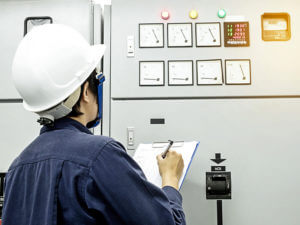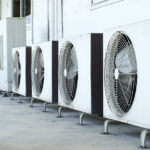The best way to combat carbon monoxide (CO) is to establish an HVAC maintenance routine with the experts at John’s Services and Sales.
The leading cause of carbon monoxide poisoning includes gas-powered outlets such as furnaces, automobiles, stoves, and even charcoal grills. But these aren’t the only sources of CO gas you should be concerned with, because even your HVAC system can sound the alarms. This is a staggering issue because CO gases are some of the most harmful substances produced today. Even a small whiff can harm your health.
If a CO gas emission gets held captive in your indoor environment, it can put all occupants at risk. Enrolling in a preventive maintenance program with the right HVAC professionals will ensure this doesn’t happen.
Carbon Monoxide Prevention Done Right
Carbon monoxide can sneak up on you in a variety of ways, but fortunately it is a preventable risk. These are some of the preventive maintenance strategies you should be practicing to help reduce the spread of this hazardous gas:
Tune Up Your HVAC System
This should already be a part of your preventative maintenance routine. You’ll want to have a professional service technician inspect your heating and cooling equipment at least twice a year. But since CO gas spreads fast, it’s probably best to schedule a monthly checkup just to be safe. This is especially important if you have gas-powered equipment such as heat pumps or water condensers. This allows technicians to patch up any damaged areas or replace old components.
Install a CO Detector
Every home or office should have at least one CO detector installed. These battery-operated solutions can be purchased at practically any hardware or department store. CO detectors work similarly to smoke alarms, but the only difference is they’re designed for emission detection only. A CO detector is a highly sensitive solution that must be programmed with the right time setting to work properly.
Perform Gas Inspections
This is an important safety check to ensure your gas-powered appliances are working properly. During a gas inspection, a registered engineer evaluates the performance of boilers, cooking stoves, and fire-related technology in the building. This allows you to see where threats such as gas line leaks, improper grounding, and corrosion might exist. You should schedule a gas inspection at least once a year.
Protect All Electrical Connections
Damaged electrical connections are serious fire hazards that attract a large amount of CO emissions. It’s important to make sure all wiring is protected and connected in the appropriate outlet. If you notice any loose or damaged wires, or see any sparks flying from your circuit box, you’ll need to notify your contractor immediately.
Contact the Authorities
If your CO detector ever goes off, evacuate the building immediately and call 911. CO poisoning spreads fast, especially when the air conditioner is on high. You may need to seek medical attention during situations like this. If you start to feel dizzy, lightheaded, or nauseated, you’ve likely breathed in the fumes of a CO gas. Once you get the appropriate medical treatment, you may want to call the Centers for Disease Control to find out how you can fight off the side effects of CO exposure.
Perfect Your Preventative Maintenance Plan Today
When it comes to carbon monoxide prevention, John’s Services and Sales is the best team to have by your side. Your safety is our No. 1 priority, so we work relentlessly to reduce the risk of unwanted gases creeping into your building. We’ll be there every step to help you create an indoor environment that is safe, comfortable, and energy efficient.
Don’t let your HVAC system be another CO risk. Contact us to create the perfect protection plan and take advantage of a superior preventative maintenance program!



